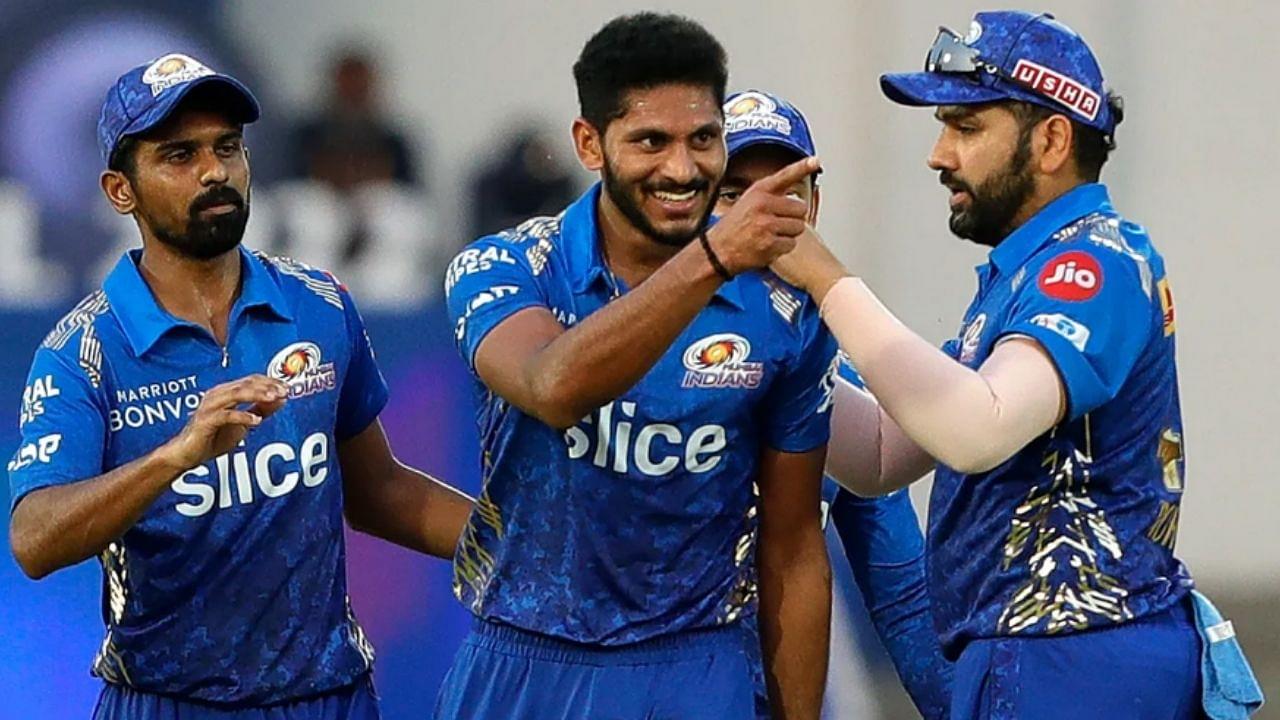Slow over rate meaning: MI skipper Rohit Sharma has been fined for his team’s slow over rate during their IPL 2022 opening match versus DC.
Advertisement
During the second match of the ongoing 15th season of the Indian Premier League between Delhi Capitals and Mumbai Indians at the Brabourne Stadium in Mumbai, MI skipper Rohit Sharma has been fined to the tune of INR 12 Lakh for maintaining a slow over rate during the second innings.
Continuing with their 10-season streak of not being able to win the opening game of an IPL edition, the Indians lost the match by 4 wickets despite being the dominant side during major parts of the match.
Handing the target of 178 to the Rishabh Pant-led side after being asked to bat first, the Indians were right in the game after dismissing three of their batters, including Pant (1 off 2) inside the Powerplay.
Dominating the proceedings even thereafter and reducing DC’s score to 104/6 in the 14th Over, MI nearly had a definite say on the match result, until Lalit Yadav (48* off 38) and Axar Patel (38* off 17) decided to toy with their bowlers.
Stitching a match-winning partnership of 75 off 30 deliveries for the 7th wicket, the duo smashed 9, 15, 13, and 24 runs from Over number 15 onwards to win their opening match with 10 deliveries to spare.
Slow over rate meaning
The IPL, in a media release post the match said, “The Mumbai Indians have been fined after they maintained a slow over-rate during their TATA Indian Premier League (IPL) 2022 match against Delhi Capitals at the Brabourne Stadium, Mumbai on March 27. As it was the team’s first offence of the season under the IPL’s Code of Conduct relating to minimum over rate offences, Mumbai Indians captain Rohit Sharma was fined ₹12 lakhs.”
Images that make you fall in love with the person in it.
First of our 2022 campaign and it had to be off RO’s bat. एकदम रापचीक! #OneFamily #DilKholKe #MumbaiIndians #DCvMI @ImRo45 pic.twitter.com/C135Cs5Kx8
— Mumbai Indians (@mipaltan) March 27, 2022
Over rate refers to the average number of Overs bowled by a fielding side in an hour of play. As per ICC rules, in the T20 format, the teams have to maintain an over rate of 14.11.
The same is 15 and 14.28 Overs per hour in Test Cricket and ODIs respectively.
Under normal passage of play a team in required to finish their 50 Overs in an ODI in 3.5 hours, while it is 1 hour and 25 minutes in case of an innings in the T20 format.
Penalty for slow over rate under IPL’s code of conduct
Since this was MI’s first offence of the season under the IPL’s Code of Conduct relating to minimum over rate offences, Sharma was fined INR 12 Lakhs for the same.
In case MI repeats the offence for the second time, he would then be fined INR 24 Lakhs and the other 10 players will either be fined six lakhs or 25% of their match fees, depending on which amount is lesser.
In case of the third and the subsequent slow over rate offences thereafter, the fielding captain would not only be fined 30% of his match fees, but would also have to then face a match ban. The remaining players in the starting 11 will also be fined 12 lakhs or 50% of their match fees, depending on which amount is lesser






